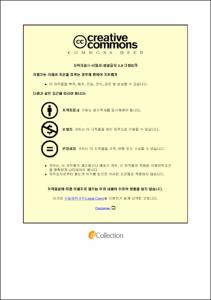CIC-DUX4 또는 BCOR-CCNB3유전자융합을 동반한 원형세포육종의 조직학적, 유전학적 특이적 소견과 유잉육종과의 비교
- Abstract
- Purpose: CIC-DUX4 and BCOR-CCNB3 fusion gene associated sarcoma is a new emerging subgroup of round cell sarcoma with Ewing sarcoma-like morphology. Distinguishing these tumors from Ewing sarcoma family tumor (ESFT) is critical because of the clinical impact but is still challenging for overlapped histological and immunohistochemical phenotypes of each subtype.
The present study 1) investigated small round cell sarcoma to identify CIC-DUX4 or BCOR-CCNB3 fusion positive sarcoma, 2) examined clinical, histopathologic and immunohistochemical characteristics of CIC-DUX4 or BCOR-CCNB3 sarcoma, and 3) evaluated parameters to differentiate Ewing sarcoma family tumors.
Method and Materials: Seventy patients who were diagnosed with undifferentiated round cell sarcoma, Ewing–like sarcoma from Asan Medical Center were investigated. The inclusion criteria were as follow: 1) EWSR1 translocation was negative or non-informative by molecular test and 2) available tumor tissue for molecular analysis. EWSR1 FISH was performed to exclude ESFT. In addition, CIC-DUX4 and BCOR-CCNB3 gene fusion was investigated by RT-PCR. The clinical and histologic phenotypes were reviewed. CD99, NKX2.2, Caveolin-1, BCOR and NUT immunohistochemical stains were performed and assessed the diagnostic value to differentiate Ewing sarcoma from other round cell sarcomas.
Results: We identified six cases of CIC-DUX4 sarcoma but BCOR-CCNB3 sarcoma was not detected. Compared to ESFT, survival outcome was not significantly different (P=0.325) but they demonstrated short event-free survival (P=0.034) and poor response to treatment (P=0.007). Histologically, heterogeneous round, plasmacytoid, and spindle cells were observed. Unlike Ewing sarcoma, cytologic pleomorphism with bizarre nuclei and multinucleated cells was common. Myxoid stoma was also frequently identified. NUT immunohistochemistry was strong positive in one of ESFTs. By immunohistochemistry, CD99 and NKX2.2 combination test may be helpful to differentiate CIC-DUX4 / BCOR-CCNB3 sarcoma from Ewing sarcoma.
Conclusion: We identified six of CIC-DUX4 from undifferentiated round cell sarcomas. They had distinct histologic features and poor prognosis compared with ESFT. Therefore, molecular analysis to detect the distinctive genetic alteration is mandatory in tumors with atypical histologic, immunohistochemical and/or clinical presentation for accurate diagnosis
- Issued Date
- 2018
- Awarded Date
- 2019-02
- Type
- Dissertation
- Keyword
- CIC-DUX4; BCOR-CCNB3; small round cell sarcoma
- Alternative Author(s)
- Song Min Jeong
- Affiliation
- 울산대학교
- Department
- 일반대학원 의학과
- Advisor
- 조경자
- Degree
- Doctor
- Publisher
- 울산대학교 일반대학원 의학과
- Language
- eng
- Rights
- 울산대학교 논문은 저작권에 의해 보호받습니다.
- Appears in Collections:
- Medicine > 2. Theses (Ph.D)
- 파일 목록
-
-
Download
 200000173422.pdf
기타 데이터 / 1.67 MB / Adobe PDF
200000173422.pdf
기타 데이터 / 1.67 MB / Adobe PDF
-
Items in Repository are protected by copyright, with all rights reserved, unless otherwise indicated.